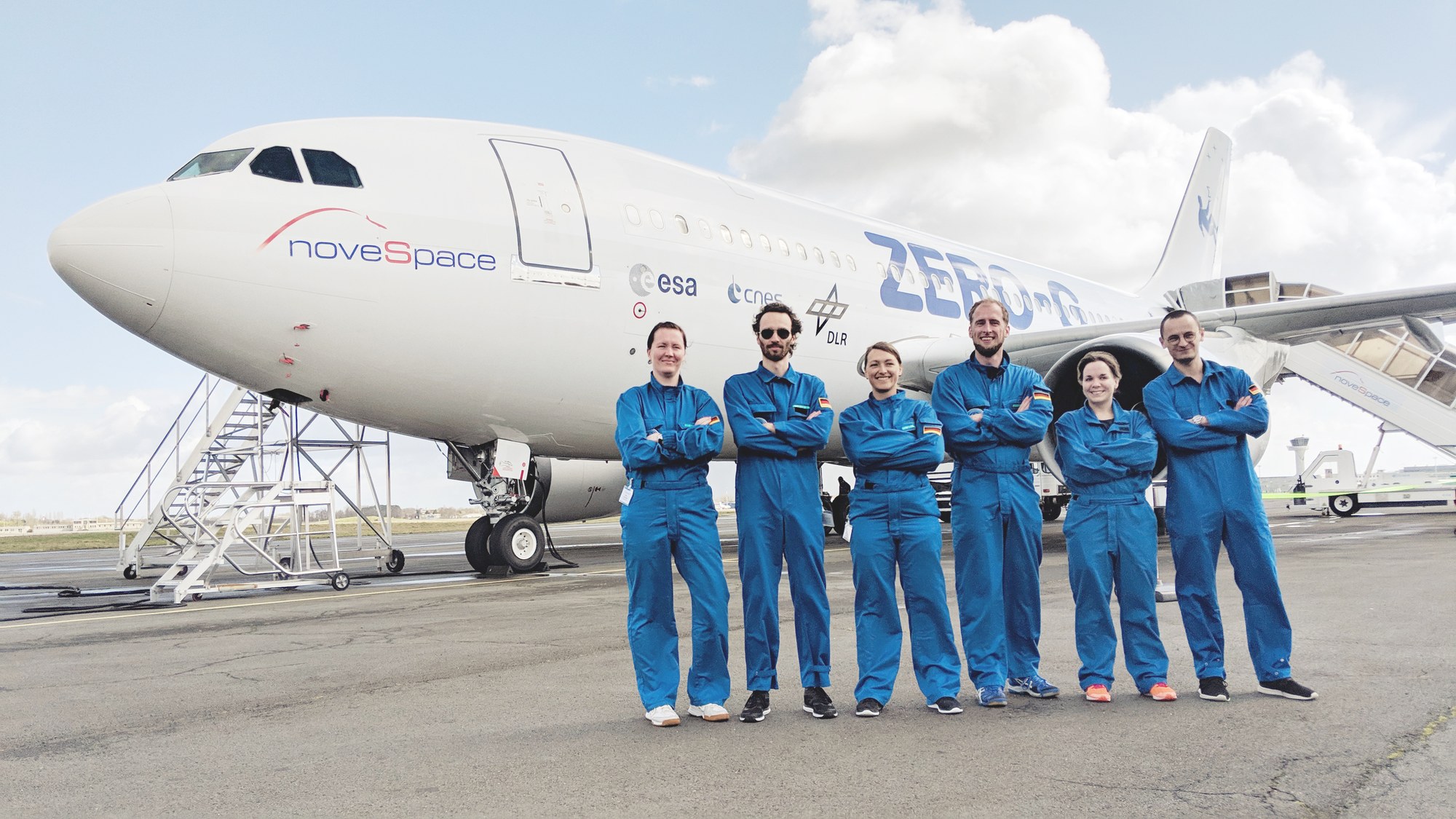ECOS – Electromyography for Teleoperated Applications in Weightlessness
As part of DLR Space Administration’s 33rd parabolic flight campaign, employees of the Institute of Robotics and Mechatronics participated in experiments in weightlessness. The flights took place on three consecutive days from March 12-15 in Bordeaux.
The series of experiment is based on a human-machine interface, which is also used by the SMiLE project. The interface uses the measured muscle activity of the arm to implement teleoperated applications, such as controlling a robot. “Originally, this interface was designed for people with severe motor disabilities, such as those resulting from Spinal Muscular Atrophy (SMA). The aim of these experiments is to test this technology, which has already been tested on Earth, for tasks in weightlessness,” said principal investigator Annette Hagengruber. The tests conducted, which could be carried out in zero gravity, will provide initial results on how the muscle signals as well as the control signals calculated from them change in comparison to terrestrial use.
The use of robots could play an increasingly important role for astronauts in the future. For example, tasks in space can be performed without additional risk to astronauts, or the robot can assist the astronaut with activities. Teleoperation gives the astronaut the ability to control the robot directly via a human-machine interface.
At the DLR Institute of Robotics and Mechatronics, teleoperation of robots, especially for space applications, is being intensively researched and tested in various missions, including on the ISS. One example of this is the KONTUR-2 experiment in which various activities were performed with a robotic system controlled by a joystick on the ISS.
Now they will investigate whether instead of a joystick, the EMG-based interface also developed at the institute can be used in zero gravity. EMG (electromyography) is the electrical detection of muscle activity. Based on these signals, an interface has been developed at the Institute of Robotics and Mechatronics that can be used, for example, to control a robot arm. Eight wireless EMG electrodes are used to measure muscle activity on the upper and lower arms of the dominant hand. The contraction of different muscle groups then generates different control signals, and the mapping of the muscle activity to the individual control signals can be individually determined by the user.
This type of interface could be an alternative to a conventional joystick. In the terrestrial experiment, three continuously controllable movement possibilities were shown, which enable efficient control of a robot. The easy-to-wear interface thus has the advantage that the sensors are mounted directly on the skin. Moreover, it can be particularly advantageous in zero gravity that the reference system of the interface moves with and is thus always aligned relative to the user.
For an initial validation, a cursor on a screen was controlled by the EMG-based interface in every 22 seconds of weightlessness. Six subjects in all had to handle various tasks that provide information about the precision of the control system. This type of experiment is based on numerous studies in the context of the KONTUR-2 mission, in which screen experiments were first carried out before the control of a real robot was tested. In addition to evaluating performance in the task, additional changes in muscle signals will be examined to determine if the interface needs to be adapted specifically for use in weightlessness.
Annette Hagengruber is very pleased with her test results to date. “Our experiment worked as expected,” she said, “We didn’t have any failures with the test persons or with the hardware. Now we have to analyze the data we received. After the good conclusion of this campaign we want to make the conditions for our subjects even more complex in the fall.”
Staff of the Institute of Robotics and Mechatronics on the 33rd parabolic flight

